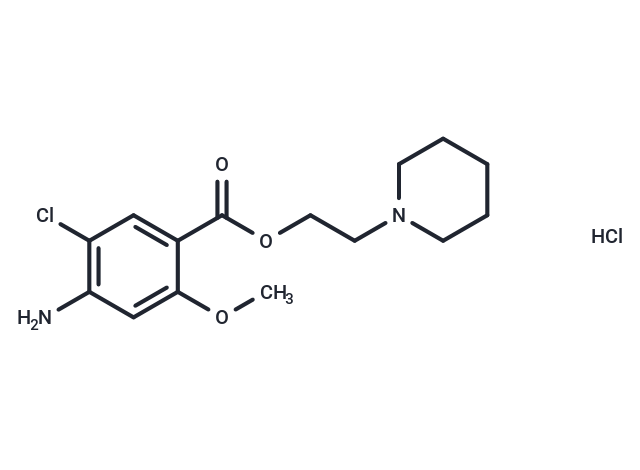Shopping Cart
- Remove All
 Your shopping cart is currently empty
Your shopping cart is currently empty

ML 10302 hydrochloride is a specific agonist 5-HT4 and binds 5-HT receptors with Kis of 1.07 nM and 782 nM for 5-HT4 and 5-HT3.

| Pack Size | Price | Availability | Quantity |
|---|---|---|---|
| 2 mg | $37 | In Stock | |
| 5 mg | $58 | In Stock | |
| 10 mg | $71 | In Stock | |
| 25 mg | $153 | In Stock | |
| 50 mg | $285 | In Stock | |
| 100 mg | $350 | In Stock | |
| 200 mg | $490 | In Stock |
| Description | ML 10302 hydrochloride is a specific agonist 5-HT4 and binds 5-HT receptors with Kis of 1.07 nM and 782 nM for 5-HT4 and 5-HT3. |
| Targets&IC50 | 5-HT4 receptor:1.07 nM (Ki), 5-HT4 receptor:4 nM (EC50), 5-HT3 receptor:782 nM (Ki) |
| In vivo | In male C57BL/6j wild-type mice, subcutaneous injection of ML 10302 hydrochloride (5, 10 and 20 mg/kg) increases the production of soluble form of amyloid precursor protein[3]. |
| Molecular Weight | 349.25 |
| Formula | C15H22Cl2N2O3 |
| Cas No. | 186826-17-5 |
| Smiles | COC1=CC(=C(C=C1C(=O)OCCN2CCCCC2)Cl)N.Cl |
| Relative Density. | no data available |
| Storage | Powder: -20°C for 3 years | In solvent: -80°C for 1 year | Shipping with blue ice. | |||||||||||||||||||||||||
| Solubility Information | Ethanol: < 6.99 mg/mL DMSO: 12 mg/mL (34.36 mM), Sonication is recommended. | |||||||||||||||||||||||||
Solution Preparation Table | ||||||||||||||||||||||||||
DMSO
| ||||||||||||||||||||||||||

Copyright © 2015-2024 TargetMol Chemicals Inc. All Rights Reserved.